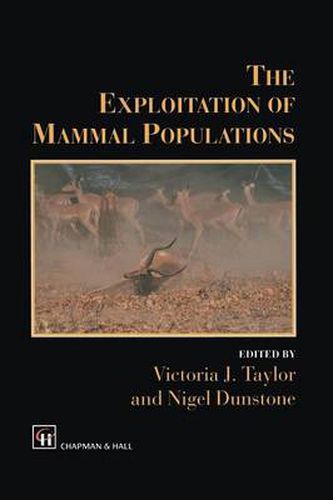Readings Newsletter
Become a Readings Member to make your shopping experience even easier.
Sign in or sign up for free!
You’re not far away from qualifying for FREE standard shipping within Australia
You’ve qualified for FREE standard shipping within Australia
The cart is loading…






This title is printed to order. This book may have been self-published. If so, we cannot guarantee the quality of the content. In the main most books will have gone through the editing process however some may not. We therefore suggest that you be aware of this before ordering this book. If in doubt check either the author or publisher’s details as we are unable to accept any returns unless they are faulty. Please contact us if you have any questions.
Human exploitation of other mammals has passed through three histori cal phases, distinct in their ecological significance though overlapping in time. Initially, Homo sapiens was a predator, particularly of herbivores but also of fur-bearing predators. From about 11 000 years ago, goats and sheep were domesticated in the Middle East, rapidly replacing gazelles and other game as the principal source of meat. The principal crops, including wheat and barley, were taken into agriculture at about the same time, and the resulting Neolithic farming culture spread slowly from there over the subsequent 10 500 years. In a few places such as Mexico, Peru and China, this Middle Eastern culture met and merged with agricultural traditions that had made a similar but independent transition. These agricultural traditions provided the essential support for the industrial revolution, and for a third phase of industrial exploita tion of mammals. In this chapter, these themes are drawn out and their ecological signifi cance is investigated. Some of the impacts of humans on other mammals require consideration on a world-wide basis, but the chapter concen trates, parochially, on Great Britain. What have been the ecological consequences of our exploitation of other mammals? 2. 2 HISTORICAL PHASES OF EXPLOITATION 2. 2. 1 Predatory man Our nearest relatives - chimpanzees, orang utans and gorillas - are essentially forest species, deriving most of their diet from the fruits of forest trees and the shoots and leaves of plants.
$9.00 standard shipping within Australia
FREE standard shipping within Australia for orders over $100.00
Express & International shipping calculated at checkout
This title is printed to order. This book may have been self-published. If so, we cannot guarantee the quality of the content. In the main most books will have gone through the editing process however some may not. We therefore suggest that you be aware of this before ordering this book. If in doubt check either the author or publisher’s details as we are unable to accept any returns unless they are faulty. Please contact us if you have any questions.
Human exploitation of other mammals has passed through three histori cal phases, distinct in their ecological significance though overlapping in time. Initially, Homo sapiens was a predator, particularly of herbivores but also of fur-bearing predators. From about 11 000 years ago, goats and sheep were domesticated in the Middle East, rapidly replacing gazelles and other game as the principal source of meat. The principal crops, including wheat and barley, were taken into agriculture at about the same time, and the resulting Neolithic farming culture spread slowly from there over the subsequent 10 500 years. In a few places such as Mexico, Peru and China, this Middle Eastern culture met and merged with agricultural traditions that had made a similar but independent transition. These agricultural traditions provided the essential support for the industrial revolution, and for a third phase of industrial exploita tion of mammals. In this chapter, these themes are drawn out and their ecological signifi cance is investigated. Some of the impacts of humans on other mammals require consideration on a world-wide basis, but the chapter concen trates, parochially, on Great Britain. What have been the ecological consequences of our exploitation of other mammals? 2. 2 HISTORICAL PHASES OF EXPLOITATION 2. 2. 1 Predatory man Our nearest relatives - chimpanzees, orang utans and gorillas - are essentially forest species, deriving most of their diet from the fruits of forest trees and the shoots and leaves of plants.